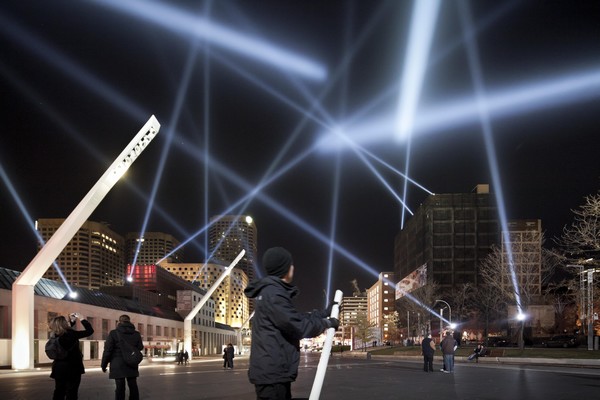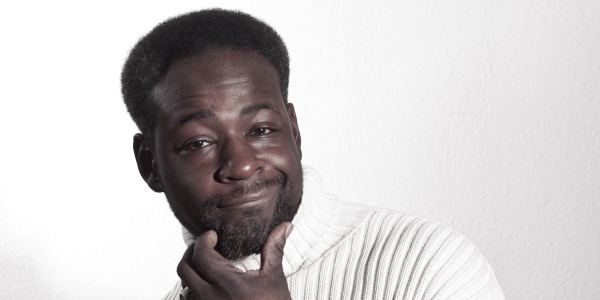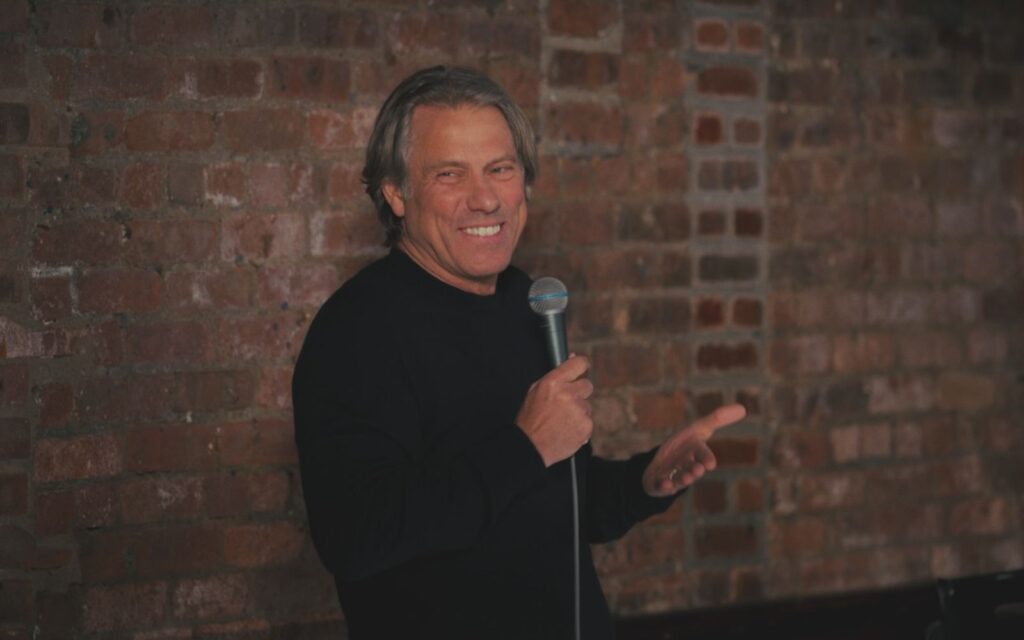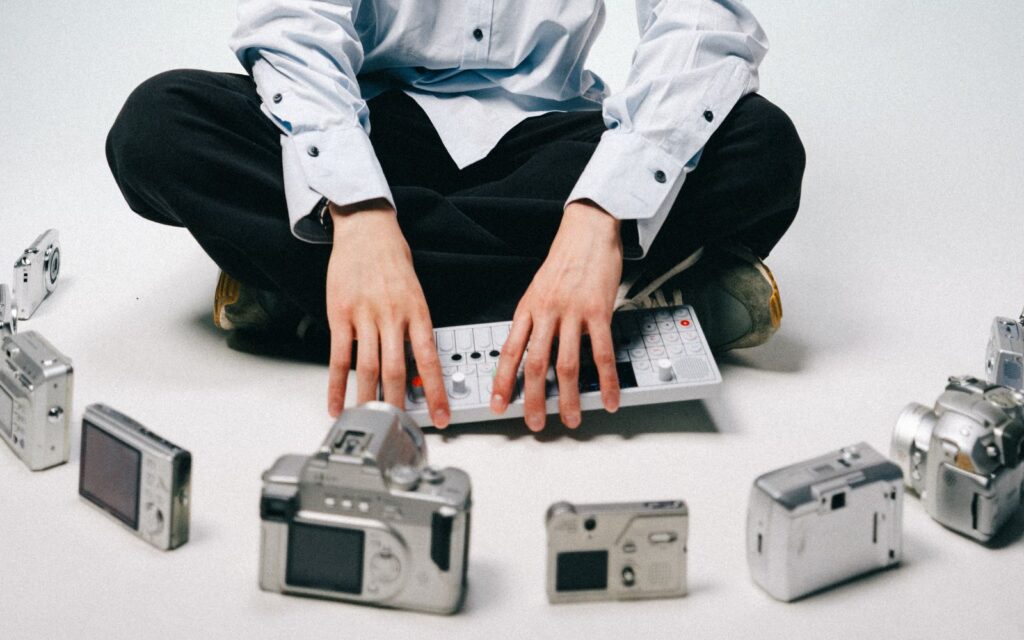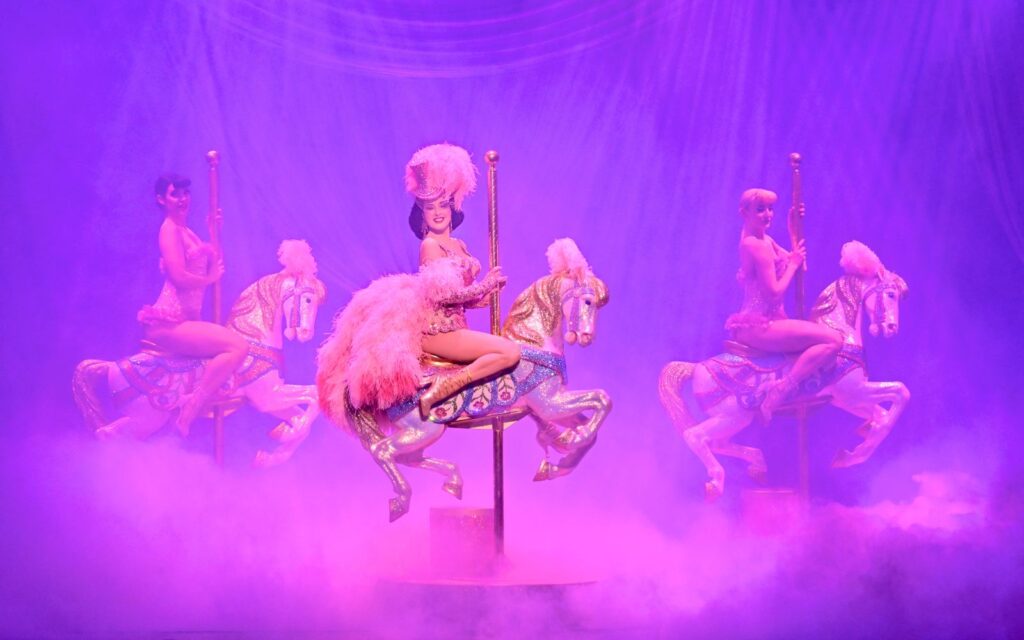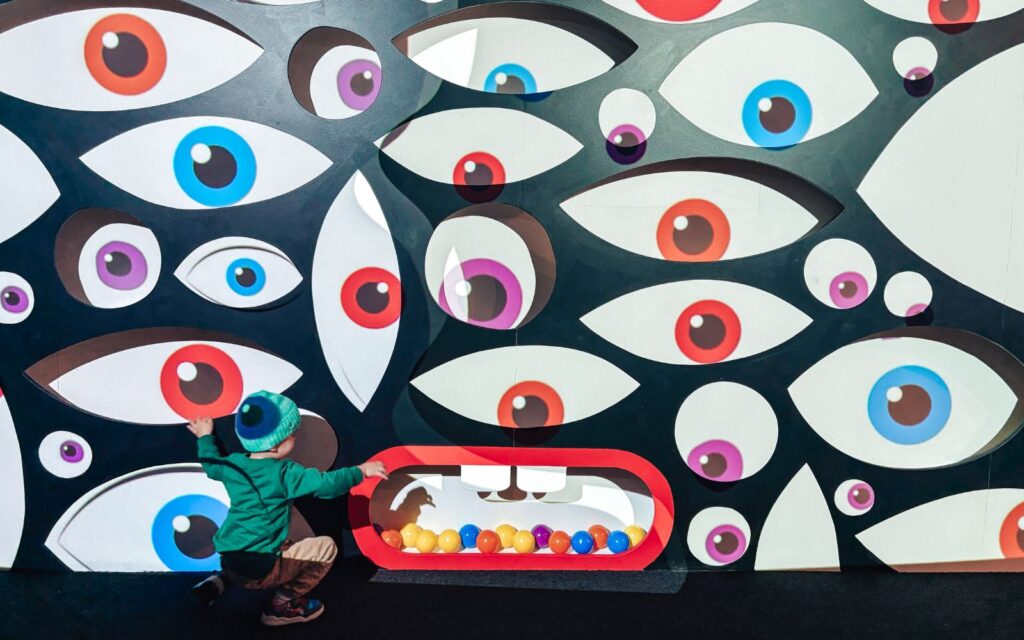On a much huger scale, Articulated Intersect will allow visitors to the arts festival in Hobart to manipulate massive beams of light over Sullivan’s Cove on the harbour via levers which direct robotic searchlights visible over a 15 kilometre radius. The artist describes this work, inspired by the articulated sculptures from the mid-20th century by artists such as Gyula Kosice (Argentina) and Lygia Clark (Brazil), as building ‘bridges of connection and invasion.’ “There are six levers on platforms for public interaction,” says Lozano-Hemmer. “They work three robotic searchlights.”
Lozano-Hemmer talks about the birth of his idea: “Search lights are associated with things like the opening ceremony of the Olympic Games, for example. One problem is the military background to searchlights, they are used for anti-aircraft surveillance; there is a predatorial aspect to them. They were used in the Nazi rallies. After WWII they were used to celebrate victory parades, in festivals; they were always included in shows or movie premieres, scanning the sky – so now we associate them with the opening of supermarkets. Contrary to both those aspects, what I’m seeking is to use the same searchlights to create an interactive, intimate experience, something which allows people to amplify their gestures on an urban scale, instead of scanning the sky randomly, like you’d see in a victory parade.”
The installation provides six platforms sited at various locations around Hobart’s harbour. A lever on each platform allows an individual to manipulate three beams and make contact in the sky with other participants working their three lights from other platforms. The artist explains: “It is not pre-programmed; if the lights are moving – someone has to do it. The person is actively communicating with the other person. The project only exists as individual to individual. These lights amplify, make gestures more public. The military is using these technologies for the purposes of military power but I am creating a connective experience. Instead of lulling the public into becoming passive spectators, instead of fireworks, Articulated Intersect is a platform for people to feel that their decisions are changing the profile of a city. The gestures are seen over a 15 kilometre radius. It increases the agency the public has to transform its own city. These lights are a good vehicle to do so.”
How does the sense of connection happen? “The connection between the remote platforms is seen in some pulsing of the light, an oscillation or glimmer to signify that a bridge is being built,” Lozano-Hemmer continues. “When you’re searching you know when someone else is connecting – a computer detects the intersection and creates a haptic vibration, there is haptic feedback, a display, to let you know you’ve made contact. It means there’s quite a sense of accomplishment when someone else intersects with your light. As I’m swinging or directing my searchlight in one direction, on the other side of the harbour the same thing is happening and so there is a sensation of building a bridge of light between people. It’s quite complex,” he adds. “The lights are robotic and it literally works with crazy mathematical components.”
Articulated Intersect was installed in Montreal in 2011 for the Triennale Québecoise. Lozano-Hemmer is thrilled to see it happen over the far less populated area of Hobart. “Correct me if I’m wrong but Hobart as a population of about 150,000, right? I am excited as the amount of light pollution in most cities is quite mind-boggling. It will be beautiful, the lights standing out against the rest of the city with lesser density, so I am looking forward to it. One other thing: the Dark Mofo installations are available to people til very late at night, not only at peak hours. Most of the time there are a lot of people; it’s quite carnival-esque – but this time it will have a solitary part. It could happen at 3am on a Tuesday night – a more quiet, intimate experience.” The artist describes the work as ‘a very playful celebration of the architectural’. “You create these shapes, these domes of light. The public has a sense of agency in creating a change to the look of their city; the work reflects urban desire, the public interaction with a city.”
Originally Articulated Intersect was designed for the US/Mexican border (Lozano-Hemmer, now based in Canada, was born in Mexico). Will the work ever be installed at that site? “I’ve been speaking to different institutions across the border,” replies Lozano-Hemmer. “We’ll find a way…the issues aren’t legal but it’s quite costly on the Mexican side. It will happen; it’s just a matter of time.” Will he get a chance to sit back and relish the results of his work for the Dark Mofo festival? “I always get stressed for opening night,” he admits. “But for the rest of it I can become one more participant, one more spectator, and enjoy it.”
BY LIZA DEZFOULI
